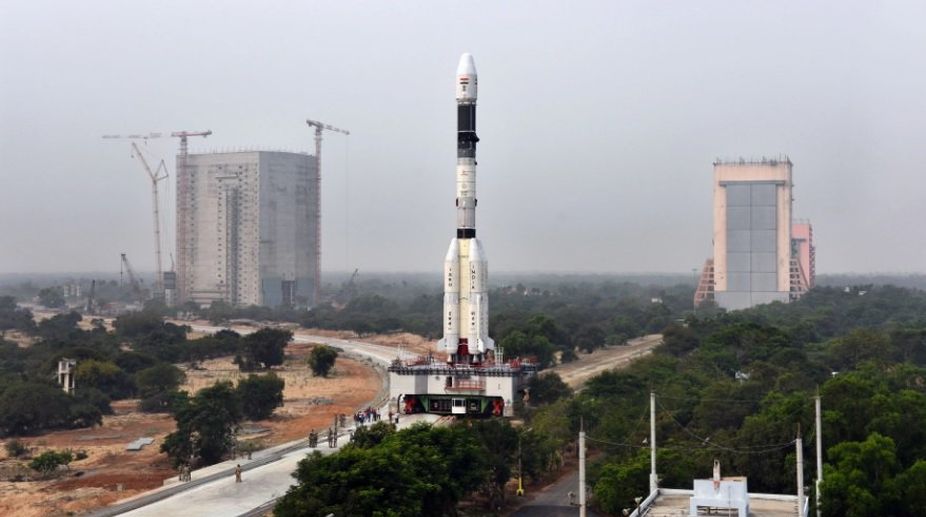India on Thursday successfully launched the GSAT-6A satellite that would provide mobile communication facilities, using its heavy rocket Geosynchronous Satellite Launch Vehicle (GSLV-F08), in a copybook style.
The GSLV-MkII rocket slung the satellite in a geosynchronous transfer orbit (GTO) from where it would be taken up to its final geostationary orbit by three orbit raising manoeuvres.
Advertisement
ISRO’s scientists at the mission control centre were visibly happy, slapping each others’ backs and hugging each other once the rocket ejected the satellite into the intended orbit.
Precisely at 4.56 p.m., the GSLV rocket ascended into the sky from the second launch pad here at Satish Dhawan Space Centre and the 49.1 metre tall rocket, weighing 415.6 tonne, slung the two tonne satellite into the intended orbit 17.46 minutes into its flight.
The purpose of the satellite is to provide mobile communication applications in S-band in five spot beams and C-band in one beam during its 10-year life span.
The Indian Space Research Organisation (ISRO) said that the GSAT-6A was similar to the GSAT-6 put into orbit in 2015.
The GSLV is a three stage/engine rocket. The core of first stage is fired with solid fuel while the four strap-on motors by liquid fuel. The second stage is the liquid fuel-propelled and the third is the cryogenic engine.
According to ISRO, two improvements — induction of high-thrust Vikas engine and electromechanical actuation system — have been made in the rocket’s second stage this time around.
One of the crucial rocket engines is the cryogenic engine, designed and developed by ISRO, and more efficient than the other two variants as it provides more thrust for every kilogram of propellant burnt.
With this successful launch, India established the performance of its GSLV-MkII rocket which in future may fetch orders from third parties for launching their satellites.
India puts into orbit foreign satellites for a fee using its lighter rocket – the Polar Satellite Launch Vehicle (PSLV) as their weight is not much.
Revenue for launching satellites depends on weight of the satellite – higher the weight, higher will be the revenue.
According to the latest Economic Survey, foreign exchange earnings of India from export of satellite launch services increased noticeably in 2015-16 and 2016-17 to Rs 394 crore and Rs 275 crore from Rs 149 crore in 2014-15.











